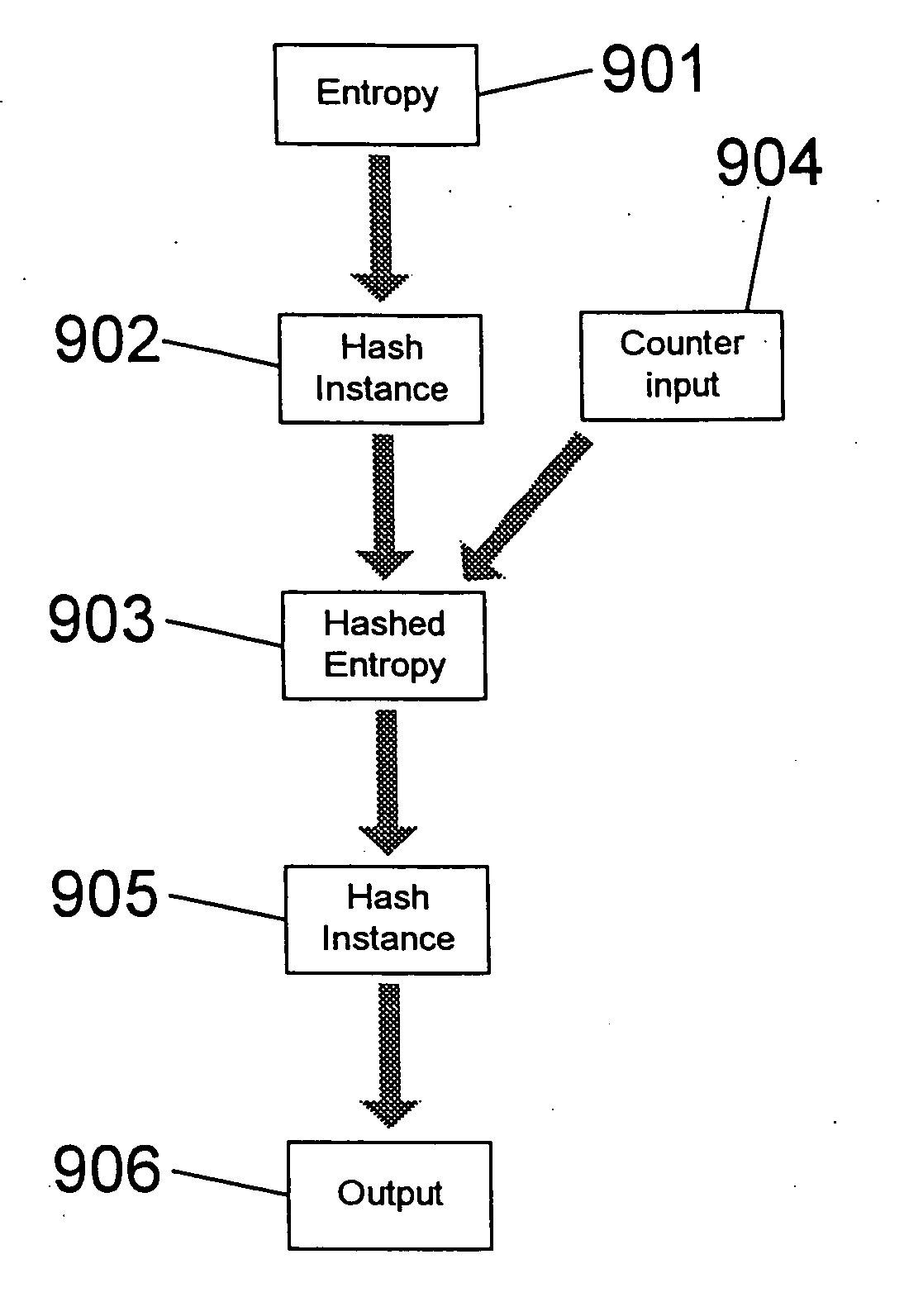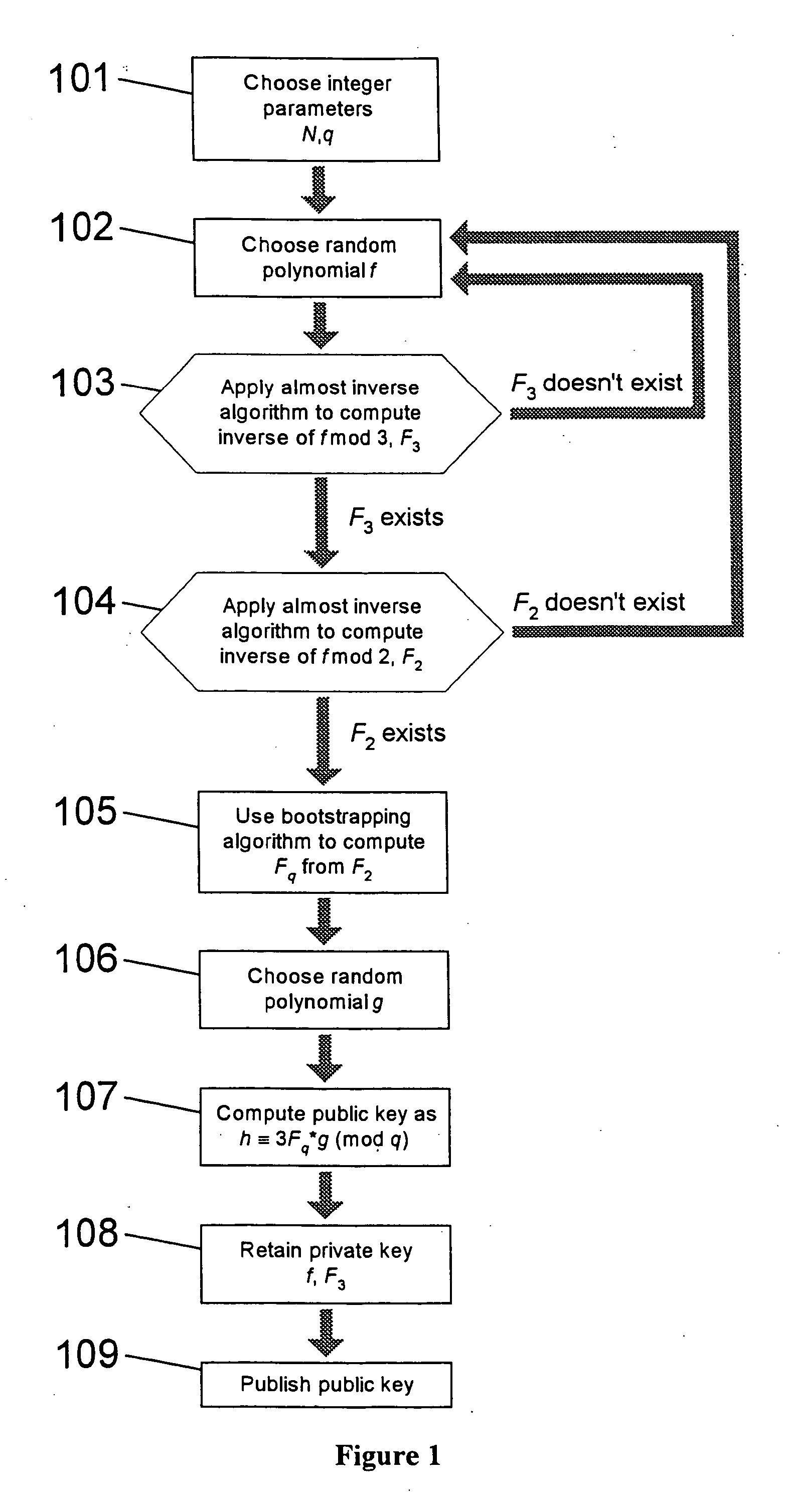Pseudo-random number generator
a generator and pseudonym technology, applied in the field of pseudonym generators, can solve the problems of not being able to perform the work of current technology in a feasible length of time, not being able to use bare algorithms as cryptographic products, and not being able to achieve the effect of a large amount of machinery and other problems, to achieve the effect of achieving the effect of a feasible length of time, and being able to perform the work of current technology in a feasible length
- Summary
- Abstract
- Description
- Claims
- Application Information
AI Technical Summary
Benefits of technology
Problems solved by technology
Method used
Image
Examples
example
[0375] Let us assume that we wish to use vector bitwise representations of the four terts 0, 0, -1 and 1. Using the vectors specified above gives us the following table:
4 Vector Vector Tert 1.sup.st bit 2.sup.nd bit 0 0 0 0 0 0 -1 1 0 1 1 1
[0376] Now, taking and storing separately the 1.sup.st bits and the 2.sup.nd bits allows us to treat this information as two separate 4-bit words, namely 0011 (representing the 1.sup.st bits), and 0001 (representing the 2.sup.nd bits). We may then carry out modulo arithmetic not on the individual terts, nor on the vectors, but on the words themselves, for example using the operations XOR, AND, OR and NOT. This avoids us having to deal with overflows or carries however many terts are being worked on simultaneously.
[0377] Apart from suggesting an efficient method of performing modulo arithmetic, this interpretation of the bits allows one to determine the value of a tert modulo 2 simply by examining the first array. Since algorithms are often concern...
PUM
 Login to View More
Login to View More Abstract
Description
Claims
Application Information
 Login to View More
Login to View More - R&D
- Intellectual Property
- Life Sciences
- Materials
- Tech Scout
- Unparalleled Data Quality
- Higher Quality Content
- 60% Fewer Hallucinations
Browse by: Latest US Patents, China's latest patents, Technical Efficacy Thesaurus, Application Domain, Technology Topic, Popular Technical Reports.
© 2025 PatSnap. All rights reserved.Legal|Privacy policy|Modern Slavery Act Transparency Statement|Sitemap|About US| Contact US: help@patsnap.com



